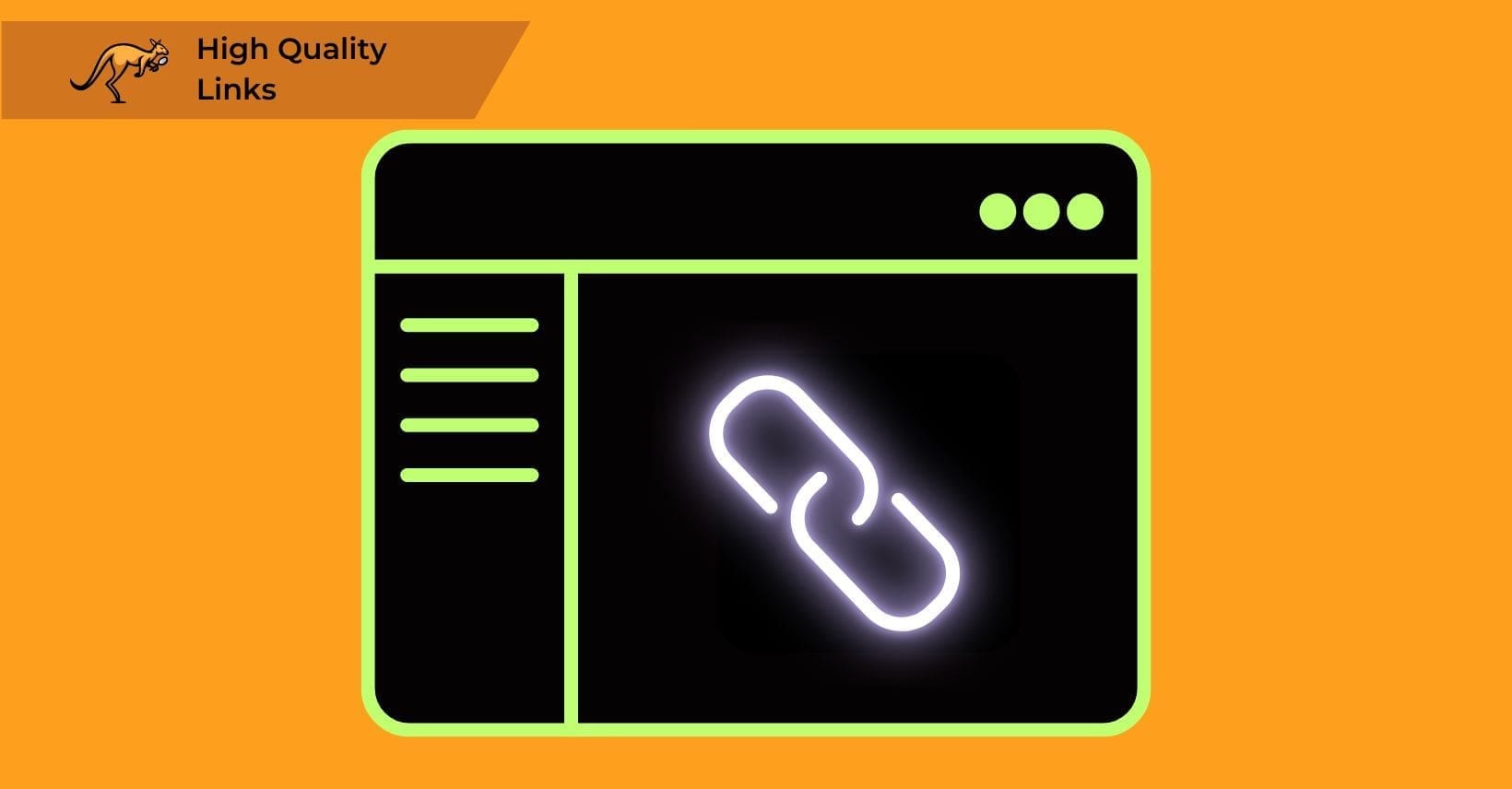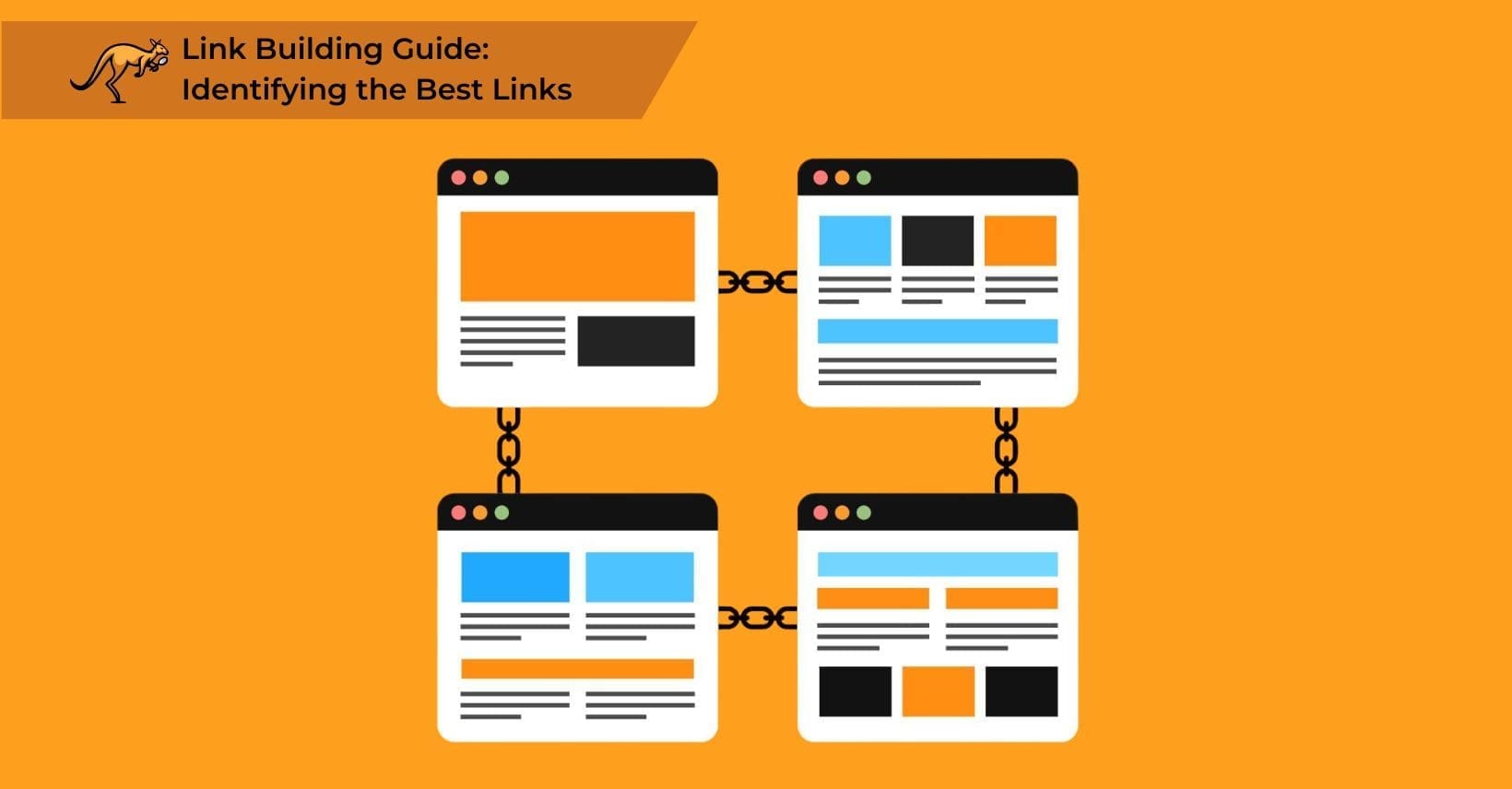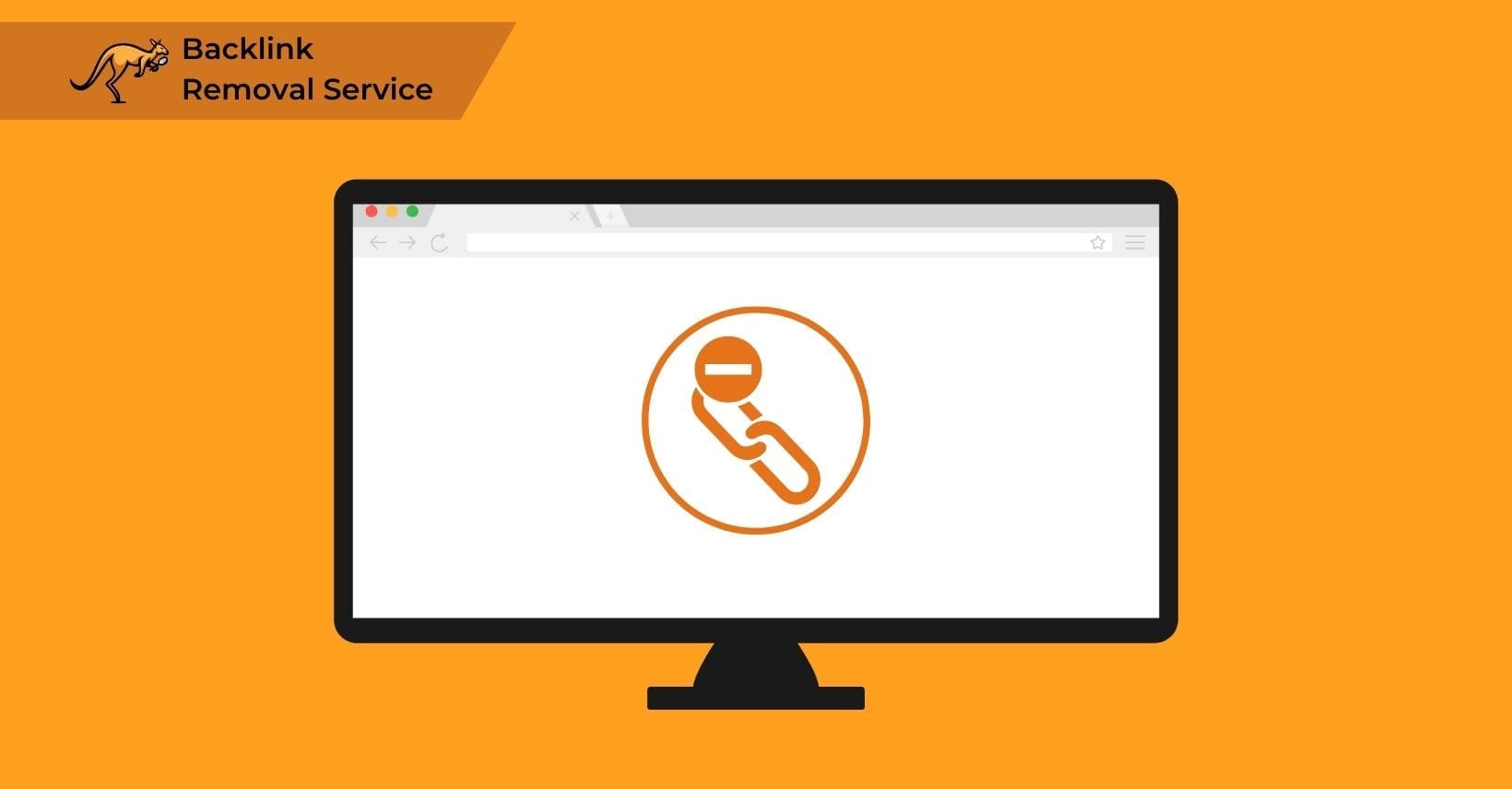The quality of a backlink is often subject to rigorous debate within the SEO community.
Opinions vary, with some suggesting the ideal link possesses almost magical attributes.
In contrast, others believe the key lies in a link’s relevance to a well-defined niche.
This guide outlines how to distinguish high-quality links by exploring characteristics like domain authority, relevance, and the alignment of content themes.
Techniques like analyzing competitors and guest blogging play a crucial role in pinpointing the most effective links for enhancing your site’s visibility.
Since link quality is governed by mathematical precision and linguistic relevance, understanding the subtle differences between effective and ineffective linking strategies is vital.
In exploring these distinctions, one might wonder what separates a good link from a bad one.
What Separates a Good Link from a Bad Link
Understanding the difference between high-quality and low-quality links is crucial for SEO success. The quality of a link significantly influences a website’s search engine performance.
High-quality links typically originate from reputable sites with substantial domain authority, enhancing a site’s credibility.
These beneficial links are marked by their relevance to the content, authoritative sources, and natural integration into the content.
On the other hand, links from spammy or irrelevant sites can damage reputation and decrease SEO value.
The source’s relevance and the anchor text’s variety and naturalness also play key roles in the efficacy of a link.
Understanding these dynamics enables us to scrutinize link sources more effectively, subtly guiding us toward the methods for discerning the most advantageous connections.
Identifying High-Quality Links

Identifying high-quality links is crucial for enhancing a website’s authority, improving search engine rankings, and driving organic traffic.
High-quality links are defined by relevance, authority, and a natural link profile. Relevance connects the link to industry-related content, benefiting users and search algorithms.
Authority indicates that the source is respected and influential within its field.
A natural link profile, with a varied mix of anchor texts and sources, reflects genuine growth and credibility, which search engines value.
These elements boost a website’s SEO performance and establish its foundational authority, subtly paving the way for exploring the influence of authoritative sources in detail.
Authority
Authority in SEO is assessed by examining the number and type of backlinks a site acquires, focusing on metrics like Domain Rating (DR) and URL Rating (UR).
To simplify, Authority is:
- The total amount of links aiming at the entire site (DR)
- The total amount of links aiming at a specific page within a site (UR)
Despite being from a low DR site, this structure reveals that a page with a high UR can still be a powerful asset in link-building strategies.
For instance, a page with a DR of 5 but over 100 links pointing to its homepage demonstrates significant UR potential, enhancing its relevance and utility in promoting link strength within a site.
Considering pages with high UR becomes crucial, as these are rich in link equity, even if the originating site’s DR is low.
However, it’s essential not to overlook the importance of DR in evaluating authority.
In a Tier 2 Link Building strategy, boosting a page’s UR through links from higher DR sites can exponentially increase its effectiveness.
Understanding the balance between DR and UR and how each contributes to a site’s authority naturally leads to evaluating the relevance of links in enhancing the authority and quality of a site’s backlink profile.
Relevance
Relevance in backlinking focuses on the contextual relationships between a site’s links and its content themes.
Analyzing a site’s backlink profile involves assessing domain and page relevance.
Links at the domain level that are highly relevant to the site’s niche are challenging to secure; however, obtaining relevant links at the domain and page levels can significantly enhance the effectiveness of the link.
For optimal results, it’s ideal to obtain do-follow links that are indexed and contextually match the target site, with particular attention to the URL’s relevance to your site.
Another thing that helps identify quality links is how they were profiled naturally.
Natural Link Profile
A natural link profile is essential for showing search engines that your website’s backlinks are gathered organically and steadily.
This profile should display a range of link sources, such as blogs, news sites, and industry portals, illustrating widespread recognition of your site’s value.
It is important to include different links, such as editorial, footer, and blogroll links, alongside a balanced ratio of dofollow to nofollow links to avoid penalties for manipulative practices.
A steady pace in acquiring links suggests natural growth, and the relevance of these links, along with their contextual appropriateness, are for preserving the profile’s authenticity.
Additionally, varying the anchor texts and keeping them pertinent to the linked content are key strategies for maintaining an organically optimized link profile that supports long-term SEO success through genuine, authoritative endorsements.
Building on these principles, one might consider various methodologies for pinpointing the most effective links to enhance this strategy.
Strategies to Identify the Best Links
It’s vital to strategically pinpoint the most advantageous links to maximize the impact of link-building efforts.
Our approach involves a multifaceted method of competitor analysis, content quality evaluations, exploring guest blogging opportunities, and employing SEO tools like SEMrush and Ahrefs.
These tools and strategies enable us to identify link prospects that not only match our website’s objectives but also perfectly fit our niche.
Competitor analysis is a key tactic in our strategy, revealing where leading competitors acquire their potent backlinks.
This analysis and ensuring our links appear on industry-relevant sites significantly enhance link value.
Furthermore, guest blogging on esteemed sites broadens our exposure while fostering organic backlinks.
We effectively streamline our process and fortify our online presence by utilizing SEO tools to automate link discovery and track progress.
These are the strategies that will help identify quality links:
Competitor Analysis
Conducting a thorough competitor analysis reveals important link opportunities that can boost our website’s authority and visibility.
By analyzing our competitors’ backlink profiles, we gain insights into their successful strategies and identify gaps in links that we can exploit.
Examining the quality and relevance of their secured links allows us to set benchmarks for our link-building efforts, aiming for superior standards.
Armed with this competitive intelligence, we can develop a strategic plan for link acquisition that aims to position us ahead of our competitors in online search rankings.
As we refine our strategies for acquiring high-quality links, the next step is to ensure that the content we offer matches the heightened standard of our link profile, thus transitioning smoothly into assessing the quality of our content.
Content Quality
Creating high-quality, engaging content is a cornerstone of effective link-building. By producing valuable and shareable content that resonates with our target audience, we can attract natural backlinks from authoritative websites, thereby enhancing our website’s SEO performance.
When we focus on developing content that addresses the needs, interests, and challenges of our audience, it not only piques their interest but also establishes credibility and authority in our niche. Through organic link acquisition, we are not only driving traffic but also building a network of connections that validate our website’s relevance. This process creates a ripple effect, enhancing our online visibility and domain authority over time. When users find value in our content, they are more likely to share and recommend it, further amplifying our reach and link-building opportunities.
Guest Blogging
Creating high-quality content is fundamental to successful link-building. By developing content that resonates and provides value to our target audience, we encourage authoritative websites to link back to us, boosting our SEO performance.
By addressing our audience’s needs, interests, and challenges, we capture their attention and establish our credibility and authority within our niche. This organic approach to acquiring links drives traffic and fosters a network of connections that affirm our website’s relevance. The resultant visibility and domain authority are incrementally enhanced as users who find our content valuable are inclined to share and recommend it, thus expanding our reach and opportunities for further link-building.
Use of SEO Tools
Utilizing SEO platforms like SEMrush and Ahrefs enhances our link-building initiatives by offering insights into competitors’ tactics, keyword potentials, and thorough backlink assessments.
These tools empower us to make informed choices, streamline our link profiles, and gauge the success of our SEO tactics.
By integrating SEMrush and Ahrefs into our strategy, we can assess link quality, anchor texts, and referring domains, bolsters our backlinks’ authority and pertinence.
Their comprehensive keyword research tools help identify high-traffic and unearth niche long-tail keywords.
Focusing on creating content that resonates with our audience, captivates their interest, and bolsters our credibility within our niche.
This approach to organic link acquisition drives traffic and fosters a network of connections that affirm our site’s pertinence.
As this network expands, our progressive online presence and domain authority make our content valuable; their shares and recommendations enhance our visibility and multiply our link-building avenues.
Additionally, as we build a more robust link profile, it’s prudent to remain vigilant about the links that could potentially dilute our SEO efforts.
Types of Links to Avoid
Building a strong link profile is vital, but it’s also important to avoid certain links that may damage our website’s SEO performance.
Steering clear of no-follow links, links from low-quality or spammy sites, and paid links is necessary to maintain credibility and authority with search engines like Google.
Here is why:
No-Follow Links
No-follow links may not pass authority directly but still provide value by driving referral traffic and enhancing brand visibility. It’s vital to balance no-follow and do-follow links in your link-building efforts.
No-follow links don’t impact search engine rankings directly; however, they are important channels that allow users to discover your content, boosting brand recognition.
Strategically using no-follow links can help build a varied backlink profile and elevate your site’s credibility.
However, overreliance on no-follow links may curb your site’s potential to gain authority and slow its organic growth. Just as the balance of link types is crucial, so is the quality of the links’ origins.
This leads us to the relevance of links from low-quality or spammy sites in potentially diluting your site’s perceived value.
Links from Low-Quality or Spammy Sites
Acquiring links from low-quality or spammy sites negatively impacts our website’s SEO health.
These links might indicate to search engines that our site is linked to unreliable sources, which could lead to penalties or a decline in rankings.
Search engines favor websites that maintain high credibility and trustworthiness. The quality and relevance of backlinks are key in shaping the strength of our website’s link profile.
Positive associations with reputable and related websites enhance our SEO.
At the same time, connections with disreputable or unrelated sites can damage our reputation and degrade our search engine standings.
Paid Links
Paid links, though tempting as a quick route for link acquisition, risk contravening search engine policies and can result in harsh penalties.
Google, for instance, favors organic link-building practices and penalizes websites that purchase links as a manipulative tactic.
Websites that buy links to enhance their search engine visibility face algorithmic penalties, such as those from Google’s Penguin update, and risk damaging their site’s integrity.
Such practices may tarnish a site’s reputation and erode trust with users and prospective clients.
Using paid links as a primary link-building strategy offers only fleeting boosts in visibility.
Eventually, search engines tend to discount these artificial links, leading to decreased rankings and organic traffic.
Focusing on generating high-quality content and forming alliances with reputable industry sites is a strategic choice.
This approach complies with search engine standards and lays a robust groundwork for enduring online success.
Working with a dedicated partner like Searcharoo can further enhance this strategy, seamlessly connecting your content with quality links that boost your site’s credibility and visibility in search results.
Why Choose Searcharoo as your partner in Link-building?
Searcharoo is known for its expert link-building services, emphasizing quality, relevance, and ethical standards.
Committed to enhancing website authority, our team has consistently delivered measurable improvements in search rankings.
We utilize an approach that integrates client objectives with industry benchmarks, providing customized strategies for each campaign.
Our dedicated professionals at Searcharoo stay updated on SEO developments, responding proactively to search algorithm changes and market shifts.
We establish strong connections with authoritative websites, securing high-quality backlinks that increase organic traffic and elevate search engine positions.
By focusing on the client’s needs and target audience, Searcharoo ensure each campaign fosters long-term growth in online presence and strengthens brand reputation.
Key Takeaways on Identifying the Best Links
The effectiveness of a link-building strategy lies in the ability to differentiate between good and bad links, prioritize high-quality link acquisition, and avoid link-building pitfalls that could harm website authority and SEO performance.
Strategic link-building is not just about the quantity of links but rather the quality and relevance of those links to the website’s content.
Assessing the link authority of potential sources before acquiring links is crucial in maintaining a strong backlink profile.
Ethical link-building practices are essential to long-term SEO success, as search engines like Google prioritize organic and natural link growth over manipulative tactics.
Frequently Asked Questions
What is link building, and why is it important?
Link building is acquiring hyperlinks from other websites to your own. These links are important for improving your website’s search engine rankings and driving more traffic.
How do I identify the best links for my website?
To identify the best links, you should determine your target audience and the websites they frequent. Then, look for authoritative and relevant sites in your industry with a strong online presence. These are the sites from which you want to get links.
What makes a link valuable for my website?
A valuable link comes from a reputable and relevant source. It should also have a high domain authority and be placed within the content of a webpage rather than in a sidebar or footer.
Can I buy links for my website?
No, buying links is considered a violation of Google’s Webmaster Guidelines and can result in penalties for your website. It is important to focus on earning natural, high-quality links through creating valuable content and building relationships with other websites.
How many links do I need for my website?
There is no set number of links that you need for your website. The quality of the links is more important than the quantity. Focus on acquiring links from authoritative and relevant sources rather than trying to reach a certain number.
How long does it take to see results from link building?
The results from link building can vary depending on your website, industry, and the quality of the links. It is important to be patient and consistent with your link-building efforts. It may take a few months to see significant improvements in search rankings and traffic.





